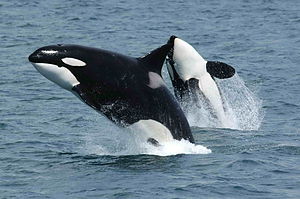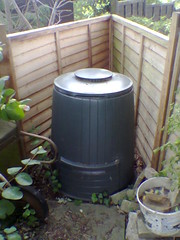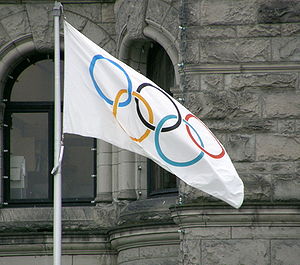 Image via Wikipedia
Image via Wikipedia
That's how many killer whales are in captivity today. It would be many more if capturing was still in favor, but fortunately that is now frowned upon in most areas of the world.
Sadly, an experienced trainer was killed at Seaworld yesterday by Tillikum, a 12,000 pound killer whale. Much has been made in the news about the two previous human deaths caused by this whale - in 1991, another trainer was killed in Victoria BC after accidentally slipping into the tank and, in 1999, a man was found in the tank after breaking into the park after hours and either accidentally or intentionally swimming with the 12,000 pound whale.
To me, these reports are missing the point. The whales shouldn't be in captivity in the first place. These are intelligent, social creatures who should be left in the wild. What's the difference between these animals and those in zoos and aquariums?
Mostly, it comes down to money. Aquariums and zoos are non-profit organizations focused on conservation and education. These parks, on the other hand, have working animals who generate millions for their owners. Until just a few months ago, Seaworld was owned by Anheuser-Busch (owner of Budweiser). It was sold to The Blackstone Group (owner of Universal Orlando). Of course, to entertain the crowds, the whales need to do tricks. Splashing people gets a lot of laughs and they learn quickly that the way they earn their food is to jump, flip, and perform.
I'm hoping this tragic case generates enough attention to make some permanent changes. Remember, you get the chance to vote with your own pocketbook. Next time you're in San Diego, consider the San Diego Zoo Wild Animal Park instead. They are all about saving endangered species. I haven't taken my family to Orlando, so I don't know a good animal venue to recommend, but the point is to think about what your money is supporting.
And, what about Tillikum? Seaworld says they won't euthanize her. Sadly, releasing Tillikum isn't an option either. He was captured at a young age 26 years ago from Iceland and little is known about his family (which he would need to reintegrate into the wild). Most of the 42 whales were actually born in captivity. There are a few older whales that could be argued to be good candidates for release. Corky and Lolita are usually the top two on this list because their whale families are known, but their owners, SeaWorld California and Miami Seaquarium, are not in the market to sell.
I had a chance to visit Keiko while he was living at the Oregon Coast Aquarium which was a huge facility compared to the tiny little pools these whales live in today. What if something along those lines was available to the whales that aren't able to be released? It would be a chance to let them live out their lives in peace and put this captive whale practice to an end once and for all.
Dawn Brancheau was the trainer who died yesterday. Let's hope this tragedy brings about positive changes for the animals she loved and respected.
 Transportation Day #5
Transportation Day #5



 Seeing them flip, jump, and fly makes you wonder if they weren’t born with wings.
Seeing them flip, jump, and fly makes you wonder if they weren’t born with wings. Transportation Day #3
Transportation Day #3
 Here's my shot at the end of the game - after all that aggression on the ice, everyone shakes hands and plays nice...
Here's my shot at the end of the game - after all that aggression on the ice, everyone shakes hands and plays nice...







![Reblog this post [with Zemanta]](http://img.zemanta.com/reblog_e.png?x-id=226e1ba5-eb12-41f1-84ca-70b8a3344fa7)

![Reblog this post [with Zemanta]](http://img.zemanta.com/reblog_e.png?x-id=298ba7a1-1f89-4d27-8bca-15bb31f97557)
 I ended up taking a Portabello mushroom quiche. I was excited for the chance to make an egg dish - since my son is allergic to eggs, we never have quiche for a meal. It was very yummy and provided me with a chance to make my first-ever homemade pie crust. I made it with brown rice flour, which I realize isn't the norm, but it was the only local flour I had on hand and actually it turned out quite well. Recipes are below.
I ended up taking a Portabello mushroom quiche. I was excited for the chance to make an egg dish - since my son is allergic to eggs, we never have quiche for a meal. It was very yummy and provided me with a chance to make my first-ever homemade pie crust. I made it with brown rice flour, which I realize isn't the norm, but it was the only local flour I had on hand and actually it turned out quite well. Recipes are below.

